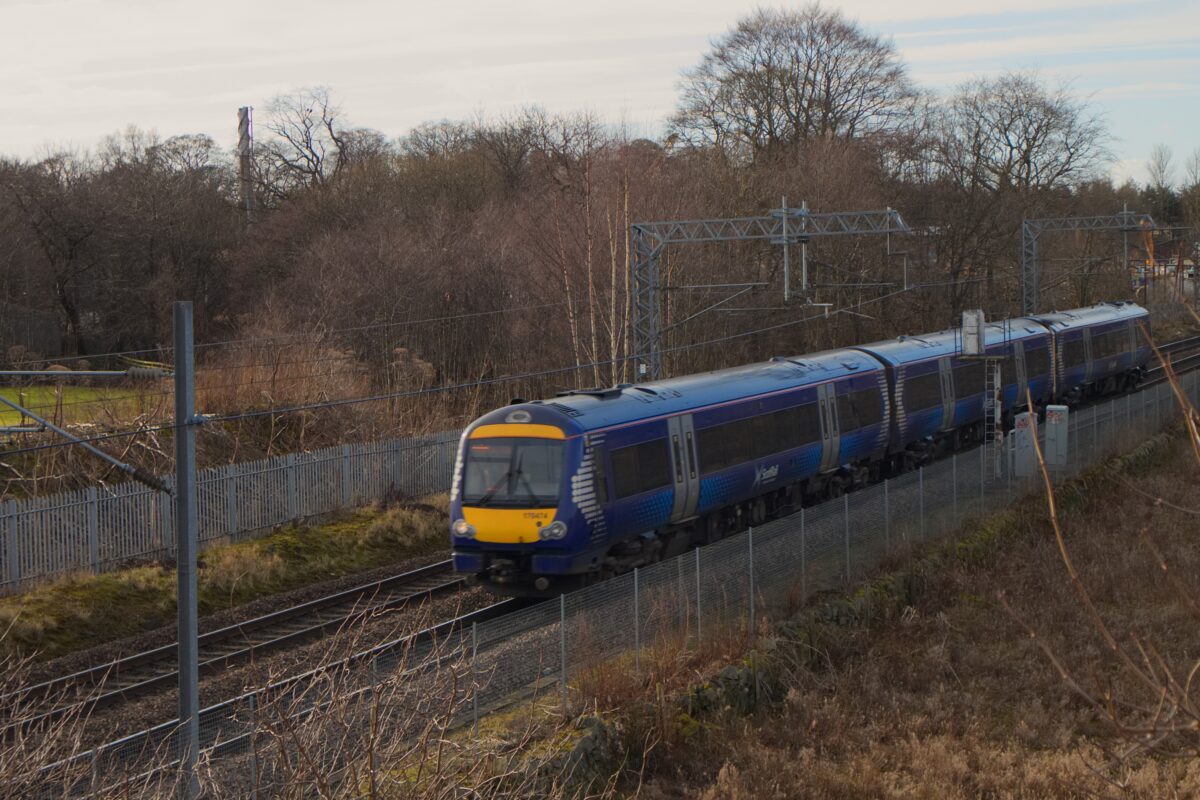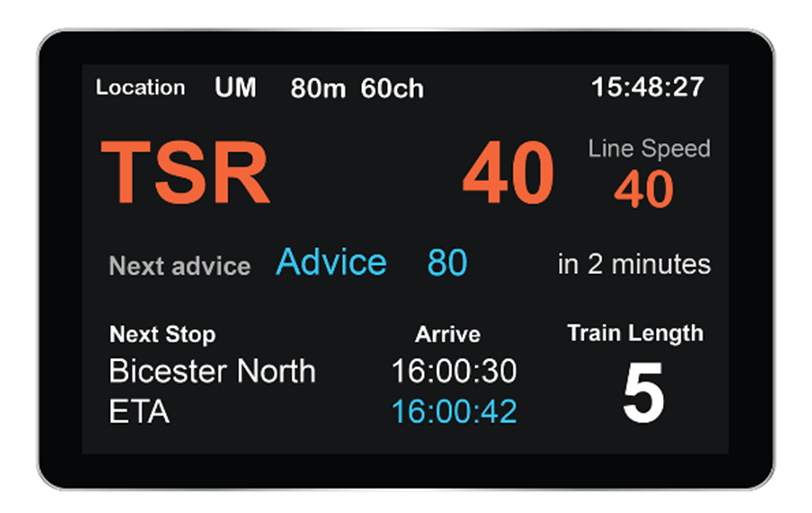Blogs
Safety through decision support: in-cab speed and route guidance

Safety has been a fundamental issue for the rail industry since the UK’s first railway companies were incorporated in the 1830s.
Technological advancements have eliminated many dangers from the network. Steam boiler explosions and coal ember fires are now historical footnotes. But preventing overspeeding is a challenge that today’s rail operators share with their predecessors.
The methods used to inform drivers about speed restrictions have barely changed in a century. These include paper notifications pinned to the crew room noticeboard, and signs that can require track closures when they need to be positioned or removed.
Can these dated processes be improved? At Zelra, we believe safety and efficiency would be enhanced by applying a proven digital solution such as our Driving Advice System (DAS). Giving drivers real-time speed and route information when they need it via an in-cab tablet or screen will reduce the risk of overspeed incidents and improve network management.
In-cab decision support
Train drivers operate in a high-responsibility environment where safety and punctuality are paramount. Zelra’s DAS is a decision support tool that helps to achieve these outcomes.
Our technology encourages smoother, more controlled driving by providing real-time speed guidance directly to drivers. This is achieved by generating and continuously adjusting an optimal journey profile for each route, based on:
- Track geometry and speed limits including TSRs
- Timetable and train characteristics
- Real-time train position and speed.
Drivers receive in-cab advice that adapts to the route conditions. Following this DAS guidance improves speed management and consistency by reducing unnecessary braking and acceleration.
As a result, drivers can have greater confidence about approaching speed restrictions, signals, and stations at the right time. This decreases the number of red signals and conflicts encountered, in turn reducing instances of hard braking at a signal or speeding up to chase the timetable.
DAS and speed restrictions
Encountering an unexpected speed restriction is a common cause of overspeeding. The consequences are serious. Incidents frequently attributed to overspeeding include signals passed at danger (SPADs), station overruns, and missed signals.
DAS enhances drivers’ situational awareness by sharing information about upcoming and current speed restrictions at the right time during each journey.

In this example, the DAS screen alerts the driver about a current Temporary Speed Restriction (TSR) and recommends a speed of 40mph, with an increase to 80mph expected in two minutes after the train has cleared the TSR zone.

In this graphical display screen, the train is arriving at a TSR. This format shows the driver upcoming speed restrictions over a greater distance while providing contextual and operational information in a modern, user-friendly way.
The software has allowed for the TSR when determining this journey’s overall profile and adjusted the recommended speeds accordingly to ensure a timely arrival. Blanket Speed Restrictions (BSR) and Emergency Speed Restrictions (ESR) will soon be similarly enabled within DAS so these can be transmitted to drivers in real time.
As well as creating immediate benefits for current drivers, implementing Zelra’s DAS would facilitate better route learning for trainees by providing them with a consistent and reliable source of speed information.
The system also improves safety outcomes for track worker sites, level crossings, and during track possessions because train speeds in these areas can be managed more effectively.
DAS and re-routing
In-cab decision support creates new possibilities for communicating re-routing information, including directly from the signalling system. The Connected version of Zelra’s DAS, known as C-DAS, could transform the quality and timeliness of route information updates.
C-DAS will be able to integrate with existing digital signalling systems and align with other digital infrastructure such as ETCS. When re-routing is required, the journey information displayed on the DAS screen will be instantly updated so the driver simply follows this revised guidance to complete the journey.
The entire network can be managed in this way so conditions, conflicts, or adjustments are applied to every train, enabling synchronised network management for greater operational efficiency.
This might sound futuristic, yet the technology is well advanced and provides a comprehensive set of additional benefits including cost-effectiveness, passenger experience, and decarbonisation. Zelra has already engaged in extensive C-DAS trials along live UK routes.
It is important to emphasise that both the Standalone and Connected versions of DAS are an advisory tool operating within the envelope of safety critical advice provided by ETCS and digital signalling systems. DAS is aligned with ETCS to ensure there are no mixed messages regarding speed restrictions or braking curves.
A new approach
The Rail Safety and Standards Board’s Annual Health and Safety Report for 2024/25 found that SPADs, which are commonly caused by overspeeding, had been rising for the previous four years . This trend indicates the established methods for informing drivers about speed restrictions are ineffective and require a new approach.
Zelra’s DAS is a proven solution that is relied upon by France’s state operator SNCF as well as leading UK passenger rail companies ScotRail, Greater Anglia, and GWR. It is also trusted by New Zealand’s largest freight transport operator, KiwiRail.
Want to start a conversation about piloting DAS on your network? Zelra’s team of industry experts are ready to discuss the possibilities so get in touch with us today.
Category
Blogs
Mode of Transport
Freight Rail, Passenger Rail
Solutions
Driving Advice System (DAS)
Region
United Kingdom
Read time
5 minutes